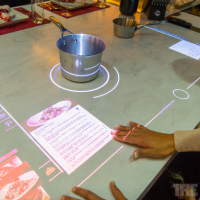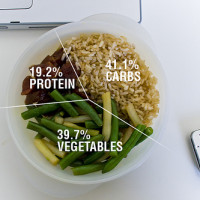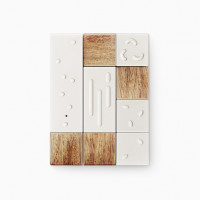Milk is becoming an object of interest for those looking to bridge analog and digital worlds, but are these designers and technologists solving actual problems?
I recently wrote about a milk jug and accompanying Android mobile app R&D project that alerts users when they are low on milk. Now a new smart milk jug project has won the Quirky + GE Project, a competition co-hosted by crowdsourcing incubator Quirky and GE Garages to make a common, everyday product smarter through software. The winning project, Milkmaid, is a quart size glass milk jug that can sense when your milk will go bad.
Created by San Diego-based entrepreneur Stephanie Burns, the jug is designed to plug into a smart base in your refrigerator. Using sensors to monitor pH levels, the LED display turn from green to yellow when the pH levels become elevated. A weight sensor in the base measures how many cups of milk are left in the jug. The milk jug is also outfitted with a temperature sensor that can alert users when milk has been left out for too long. Notifications can be accessed via a free iPhone app.
“Milk jugs are not beautiful. And the clear plastic doesn’t keep your milk as fresh as a dark container does. I’d like to have a reusable jug that you can pour your milk into that not only looks great but has a digital readout that tells you when it’s REALLY going bad. No more smell tests,” writes Burns in her problem description on the Quirky website.
My first reaction is that this seems like an overly complicated and expensive way of testing whether your milk has gone bad. What problem is this really solving?
A quick look at the product research results also leaves me questioning the market for Milkmaid. While 67 percent of respondents said it would be useful to have a pitcher that alerts them when their milk is going bad, 95.05 percent also responded that they prefer to keep milk in it’s original packaging. 60 percent of respondents indicated that their milk goes bad sometimes, but this does not really say anything about how big of a problem spoiled milk is for those respondents.
Many from the Quirky community shared comments to the same affect on the Quirky submission page:
“I hate to say this but I think you guys are going in the wrong direction. Re-Inventing the entire container really is going to shoe-horn the end product into the niche “sky-mall” or Foodie markets. I can understand and agree that knowing the freshness of milk or how long is has until it goes bad is important; especially in house holds with small children raiding the fridge.
However with millions of plasitc milk jugs sold in the united states each day and traditional paper and other containers on the market doesn’t it make sense to focus on a universal sensor probe??? Rather than pouring my milk into a separate container that requires cleaning (using water and chemicals) just insert a probe into the milk jug (or container) that you get from the store (or in my case dairy farm delivery service). This will also reduce the cost of producing each unit making it viable from a purchasing ROE perspective…” – Paul Zedek
“I think you may be making this a little too complicated. Give me a replacement cap that senses the amount of bacteria or amount of CO2 gas being given off by the spoiling milk that causes the milk cap to change colors or simply display the word “BAD” on it. The cost of development would be less and could be sold easier at somewhere like Bed, Bath & Beyond. Depending on how it’s developed, it could be a simple replacement to the current caps used.” – Ron Pierce
Burns responded to concerns saying:
“Yes – I want it to be beautiful in the fridge. It’s not a need, it’s a want. There are a large amount of people that want their items to be beautifully designed – have you read Steve Job’s book?
You said it in your comment above, “how many people have milk that goes bad?” The answer is – a lot. People who travel, people with shitty apartment fridges (that would be me) that doesn’t keep anything for long.
This is an idea that was picked by GE because 1) nothing has been done in the milk space at all and 2) it’s marketable and sellable…”
Others seemed to support the idea:
“The vast majority of the products we see on the shelves of outlets such as Bed Bath and Beyond, Target, etc. are filled with beautiful accessories for other such products. I believe this idea has as much merit and use as any of the others. If a consumer doesnt want it then they simply will not buy it. No body needs glow in the dark corn cob holders (if theyre not out there thats my idea) but im sure they are. Its consumerism at its finest, in fact im sure my mother in law would buy two. Americans have gotten used to our recyclable containers but please take note that our friends to the north (Canada for example) actually do do not. They use containers to place plastic bags of milk into and simply cut the corner off to pour out. If the US markets didnt demand your beautiful containers Im sure Canada – and other countries would be happy to…” – Ben Gallaway
“I like the idea of knowing when Milk is bad. A nice container would be good too, but I have concerns about pouring it into a new container that I have to clean. I’m no milk expert, but air is the enemy of milk as well as surface bacteria. So you’d have to make sure your container is very clean. Pouring from one container to the next can cause air to mix into the milk. Both of these could shorten the milk life.” -Michael Lobsinger
The beauty of Quirky is that now it is up to the market to determine pricing and whether Milkmaid will actually make it in the market.







